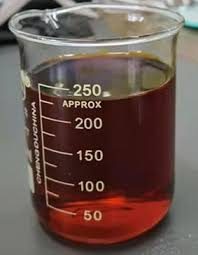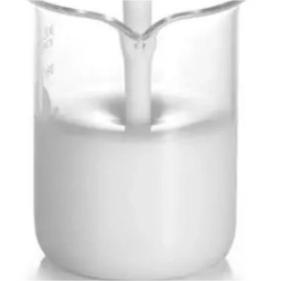**Title: Surfactants: The Tiny Titans That Make Water Work Wonders**
(What Is A Surfactant And How Does It Work)
**Main Product Keyword:** Surfactant
**1. What Exactly Is a Surfactant?**
Think about oil and water. They famously don’t mix. Getting grease off your dishes seems impossible with water alone. This is where surfactants step in. “Surfactant” is a mash-up of “Surface Active Agent.” It’s a fancy name for a special kind of molecule. Imagine a tiny tadpole. One end of this molecule loves water. We call this the hydrophilic head. The other end hates water. It loves oil and grease instead. This is the hydrophobic tail. This split personality is their superpower. Surfactants hang out at surfaces. Like where water meets air. Or where water meets dirt or oil. Their dual nature lets them bridge the gap between things that normally repel each other. They are the ultimate peacemakers in the world of molecules. Without them, cleaning, mixing, and many industrial processes would be incredibly difficult.
**2. Why Do Surfactants Matter So Much?**
Their importance is huge. Surfactants are everywhere. They are fundamental workhorses in modern life. Think about washing your hands. Soap is packed with surfactants. They grab the dirt and germs. Then they let water rinse them away. Shampoo relies on surfactants to lift oil from your hair. Laundry detergent uses them to pull stains out of fabric. Dish soap uses them to cut through greasy pans. But it goes way beyond cleaning. Surfactants are in your toothpaste. They help spread the paste and create foam. They are in your lotions and creams. They help mix oil and water into smooth emulsions. They are in paints. They help the paint spread evenly and stick to surfaces. They are in agriculture. They help pesticides spread on plant leaves. They are in firefighting foams. They help smother flames. They are even in foods like mayonnaise and ice cream. They act as stabilizers. Life without surfactants would be messy. Cleaning would be hard work. Many products we rely on simply wouldn’t work.
**3. How Do These Clever Molecules Actually Work?**
The magic happens because of their unique structure. Remember the water-loving head and oil-loving tail. When you add surfactants to water, they don’t just dissolve quietly. They get busy. First, they gather at the surface of the water. Their hydrophobic tails stick up into the air. This escape the water they hate. Their hydrophilic heads stay down in the water. This reduces the surface tension. Water becomes “wetter.” It can spread out more easily. This is crucial for cleaning. Now, think about a greasy stain on fabric. Water alone beads up on it. Surfactant molecules attack. Their hydrophobic tails burrow into the grease. Their hydrophilic heads face outwards into the water. The surfactant surrounds the grease droplet. It forms a little cage called a micelle. The grease is now trapped inside. The outside of this micelle is water-loving. So the whole package can be lifted away by the rinse water. For emulsification, like in mayonnaise, surfactants coat tiny oil droplets. Their tails are in the oil. Their heads are in the water. This stops the oil droplets from merging back together. The mixture stays smooth and stable.
**4. Surfactant Superpowers: Where You Find Them Every Day**
Surfactants are hidden heroes in countless applications:
* **Cleaning Crusaders:** This is their biggest role. Laundry detergents, dish soaps, hand soaps, household cleaners, industrial degreasers – all depend heavily on surfactants to remove dirt, grease, and stains.
* **Personal Care Partners:** Shampoos, conditioners, body washes, facial cleansers, toothpaste, shaving cream. Surfactants clean, foam, and help mix ingredients. They make lotions smooth and help creams absorb.
* **Food Industry Helpers:** They act as emulsifiers in salad dressings, mayonnaise, sauces, and ice cream. They control crystallization in chocolate. They help with texture in baked goods. They stabilize whipped toppings.
* **Paint & Coating Crew:** Surfactants help pigments mix evenly in paint. They help the paint spread smoothly. They improve adhesion to surfaces. They prevent bubbles and defects.
* **Agriculture Aides:** They help pesticides and herbicides spread evenly on plant leaves. They help these chemicals stick better. They improve effectiveness and reduce waste.
* **Medicine Makers:** Used in drug formulations to improve solubility. Used in creams and ointments. Used in disinfectants.
* **Industrial Allies:** Key in textile processing, paper manufacturing, metal working fluids, oil recovery, and mining. They help with wetting, foaming, dispersing, and emulsifying.
* **Firefighting Foam:** Special surfactants create stable foam blankets. This smothers liquid fuel fires by cutting off oxygen.
**5. Surfactant FAQs: Your Top Questions Answered**
* **Are surfactants safe?** Most surfactants used in consumer products are safe when used as directed. Regulations exist. However, some people have sensitive skin. Certain surfactants can cause irritation. Always rinse thoroughly. Some older surfactants raised environmental concerns. Modern formulations often use more biodegradable options.
* **What’s the difference between soap and detergent?** Soap is a specific type of surfactant. It is made from natural fats/oils and an alkali. Detergents are synthetic surfactants. They are often derived from petroleum. Detergents generally work better in hard water. They don’t form soap scum like traditional soap can.
* **Do surfactants harm the environment?** Some older surfactants, like certain nonylphenol ethoxylates, were persistent and toxic. Many modern surfactants are designed to break down more easily in the environment. Biodegradability is a key focus now. Choosing eco-certified cleaning products often means choosing safer surfactants. Proper wastewater treatment is also important.
* **Why does soap make bubbles?** When you agitate water with surfactant, you trap air. Surfactant molecules quickly surround the air pockets. Their hydrophilic heads point outwards into the water. Their hydrophobic tails point inwards towards the air. This forms a stable film – a bubble. The more surfactant, the more stable and plentiful the bubbles.
(What Is A Surfactant And How Does It Work)
* **What does “SLS” or “SLES” mean on my shampoo?** These are common types of surfactants. Sodium Lauryl Sulfate (SLS) is a strong cleanser and foamer. It can be harsh for some skin types. Sodium Laureth Sulfate (SLES) is a milder cousin. It is less irritating for most people. Both are effective cleaning agents widely used in personal care products.
Inquiry us
if you want to want to know more, please feel free to contact us.




